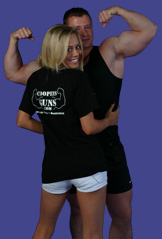Rotator Cuff Injury
What it Effects
- The muscles of the rotator cuff - Supraspinatus, Infraspinatus, Subscapularis and Teres Minor
Who it Effects
- Sports were repetitive overhead motions take place (e.g. throwing sports)
Mechanism of Injury
- Micro trauma due to repetitive movements straining the muscle (see soft tissue injuries)
- Impingement during overhead activities which cause Supraspinatus to catch on the Acromion
- Could also be due to shoulder instability effecting the mechanics of the shoulder joint e.g. during a throwing motion part of the rotator cuff may impinge under the Coraco-Acromial arch
Signs and Symptoms
- Pain
- Decreased active range of movement at the shoulder
- Weakness around the shoulder
- When in an acute phase pain will be intermittent on overhead activities
- When chronic, pain will be persistent during overhead activities and possible pain at rest
- Oedema
- Bruising
- Point tenderness
- Positive empty can test
Treatment
- PRICE
- NSAID’s (non-steroidal anti- inflammatories)
- Passive and active range of movement of the shoulder
- Stretching of the shoulder capsule
- Local heat before stretching
- Ultrasound
- Isometric exercise below shoulder level to strengthen the shoulder stabilisers
- Restore scapulo-humeral rhythm
- Isotonic exercise using theraband and light weights (keeping the thumb turned up, this externally rotates the humerous, giving more space for the tendons to work therefore reducing the risk of impingement)
- Weight bearing/closed chain exercise to improve strength and proprioception
- Treatment varies depending on degree and cause of injury so consult a physiotherapist
Additional Information
- The function of the rotator cuff is to counteract the movement of the powerful Deltoid muscle by stabilising the humerous in the Glenoid Fossa on movement
- Injury due to repetitive strain starts with oedema and haemorrhaging and is then followed by fibrosis and tendinitis
- Injury due to shoulder instability takes place due to increased demands on the rotator cuff muscles which fatigues them and causes tendonitis
- Rotator cuff injuries are hard to differentiate from impingement syndrome of the shoulder
Exercise videos
Range of movement
- Shoulder Abduction
- Shoulder Extension
- Shoulder Flexion
- Lateral Rotation
- Medial Rotation
- Hand Behind Back
- Hand Behind Head
- Chest Shrug
- Retraction
- Superman (with weights)
- Back Shrug
- Press-up against wall
If you have any questions, please use the comment form below or post a thread on the forums.
